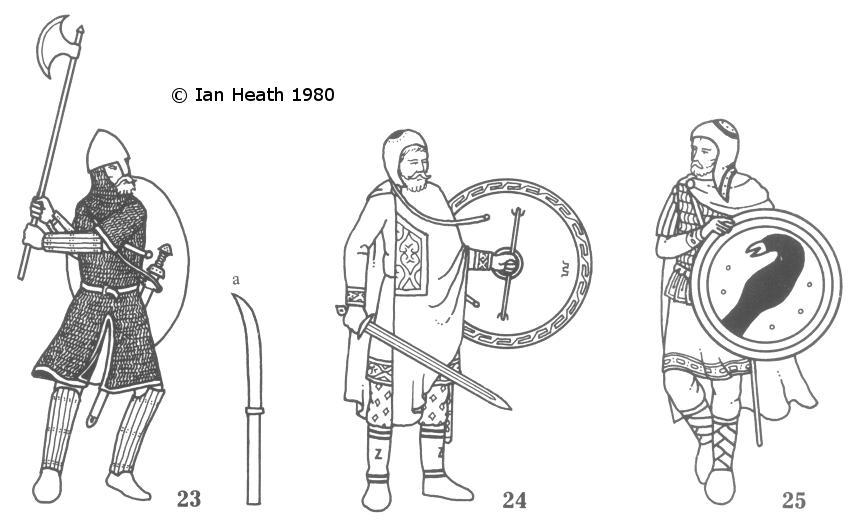VARANGIAN GUARDSMEN
|
An extract from Armies of the Dark Ages 600-1066 by Ian Heath  | |||
| [23a based on The Book of Job, Old Testament, Byzantine, 9th century. Biblioteca Apostolica Vaticana MS. gr. 749.] | [Based on a Byzantine Mosaic depicting the soldier, Longinus, in the Nea Moni Church, Chios, Greece, c.1049-55AD] | [Based on a Varangian centurion on a Byzantine Icon, the 'Goldene Tafel', 11th century] | |
